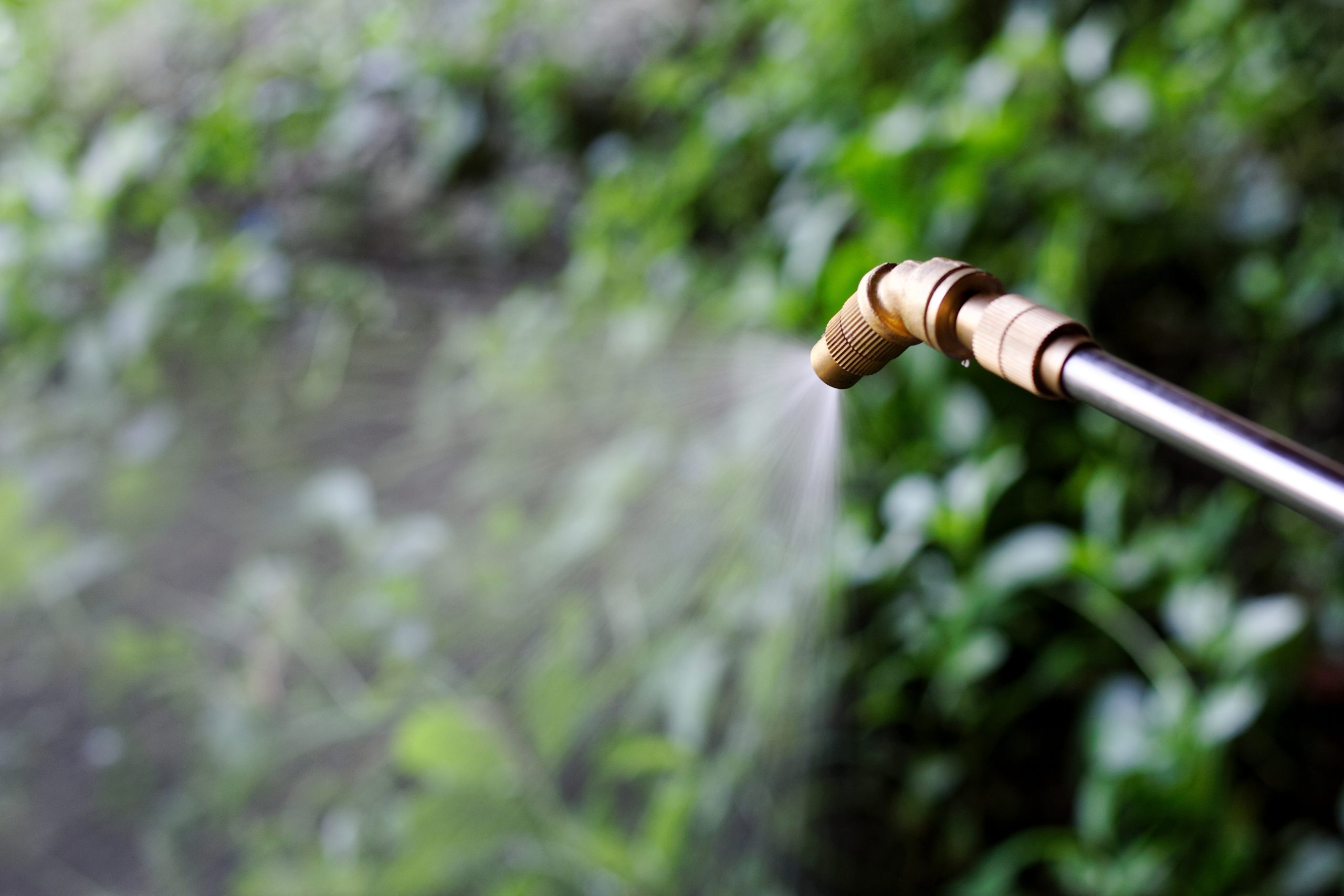Weeds pose significant challenges in turfgrass and ornamental settings, competing with desirable plants for nutrients, water, and sunlight. Left unchecked, weeds can detract from the visual appeal of landscapes, weaken turfgrass stands, and impede the growth of ornamental plants.
Effective weed control is vital for maintaining healthy turfgrass and ornamentals. Herbicides are essential tools for achieving this goal, offering targeted solutions while preserving aesthetics and protecting desirable plants and grasses. This guide covers some commonly asked questions about herbicide use in turfgrass and ornamental settings, including types, modes of action, application techniques, best practices, and more.
What is a Herbicide?
A herbicide is a chemical substance formulated to control or eliminate unwanted vegetation. What does herbicide do, though, exactly? These compounds function by disrupting essential physiological processes within plants, impeding their growth and development, and ultimately controlling and/or suppressing them. By targeting specific biochemical pathways or cellular structures crucial for plant vitality, herbicides effectively inhibit photosynthesis, cellular division, or other metabolic functions. What is herbicide used for? Herbicides are used to safeguard desired plants and turfgrass and maintain aesthetically pleasing landscapes by eliminating undesired plant species.
Types of Herbicides
Herbicides come in various formulations, designed to target broadleaf weeds, perennial weeds, and annual weeds while minimizing harm to desirable vegetation. Herbicides can control even the toughest weeds and grasses, including goosegrass and crabgrass.
Pre-emergent herbicides are applied before weed seeds germinate and can be put down after spring seeding. Pre-emergent herbicides create a barrier in the soil, preventing weed seedlings from establishing and germinating. They are particularly effective for controlling annual grasses and broadleaf weeds in turfgrass and ornamental settings. There are liquid products, and there are also granular pre-emergent products that provide control in landscape beds and turf areas.
Post-emergent herbicides are applied to actively growing weeds, targeting existing weed populations, and can be further categorized as selective vs. non-selective herbicides.
Selective post-emergent herbicides target specific types of weeds while leaving desirable turfgrass or ornamental plants unharmed. Selective post-emergent herbicides are commonly used in turfgrass management to control broadleaf weeds without damaging grass species.
Non-selective post-emergent herbicides are designed to kill or suppress all vegetation they come into contact with, including both weeds and desirable plants. Non-selective post-emergent herbicides are used sparingly in ornamental settings to target stubborn weeds in areas where selective control is not feasible.
Modes of Action
Herbicides act through contact or systemic mechanisms, affecting foliage or the entire plant respectively.
Contact Action
Contact herbicides kill only the parts of the plant they come into contact with, usually the foliage. They are effective for controlling annual weeds and provide rapid results upon application.
Systemic Action
Systemic herbicides are absorbed by the plant and translocated throughout its system, killing it from within. They are particularly effective against perennial weeds with extensive root systems and provide long-lasting control.
FRAC Codes
FRAC (Fungicide Resistance Action Committee) codes are the standardized classification system used to categorize herbicides based on their mode of action. Each FRAC code represents a specific mode of action, describing how a herbicide disrupts processes in targeted plants. By understanding the FRAC code of a herbicide, turf care professionals can build their program and rotate herbicides with different codes to prevent resistance.
Herbicide Usage Instructions and Safety Precautions
It’s essential to follow label instructions carefully to ensure proper application rates, timing, and the right environmental conditions to ensure effective weed control while minimizing risks to desirable vegetation.
Timing and Application Rates
When to Apply Pre-Emergent Herbicide
Pre-emergent herbicides should be applied before weed seeds germinate, typically in the early spring or fall, to prevent weed establishment.
When to Apply Post-Emergent Herbicide
Post-emergent herbicides should be applied when weeds are actively growing and are vulnerable to treatment.
Calibration and Equipment
Proper calibration of equipment is essential for achieving accurate herbicide application rates and ensuring optimal weed control. Calibration involves adjusting equipment settings, such as spray nozzles and pressure on spreader/sprayers, to deliver the correct amount of herbicide per unit area. Using calibrated equipment helps prevent over- or under-application of herbicides, maximizing efficacy while minimizing waste.
Adjuvants and Surfactants
Adjuvants and surfactants are additives used to enhance herbicide effectiveness by improving their spread, penetration, and absorption into plant tissues. In turfgrass and ornamental management, adjuvants and surfactants can help increase herbicide efficacy, especially in challenging environmental conditions or with hard-to-control weed species. It’s essential to select adjuvants and surfactants appropriate for the herbicide being used and follow label recommendations for proper application.
Cultural Practices for Weed Management
Cultural practices, such as proper mowing, irrigation, fertilization, and aeration, play a vital role in weed management in turfgrass and ornamental settings. Maintaining healthy turfgrass stands and ornamental plantings through proper cultural practices can help suppress weed growth, reduce weed competition, and minimize the need for herbicide applications.
Choosing a Herbicide
Herbicides are valuable tools for weed control in turfgrass and ornamental management, offering targeted solutions for maintaining healthy, vibrant outdoor spaces. By understanding the different types of herbicides, their modes of action, application techniques, best practices, and considerations for sustainable weed management, turfgrass managers, lawn care operators, and homeowners can make informed decisions to effectively manage weeds while minimizing risks.









